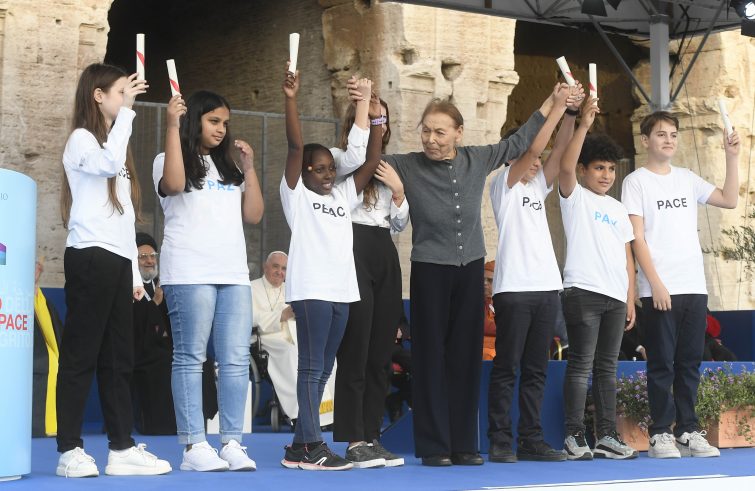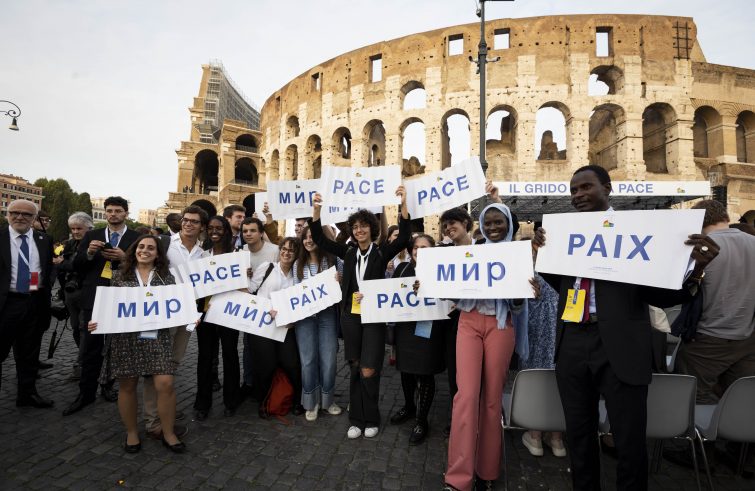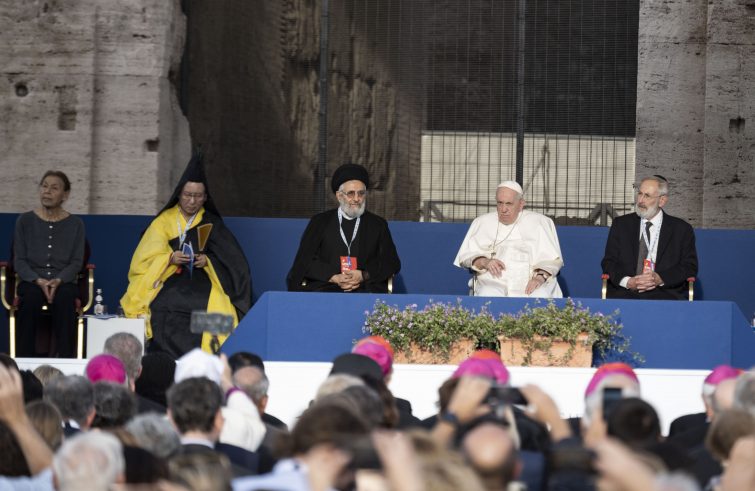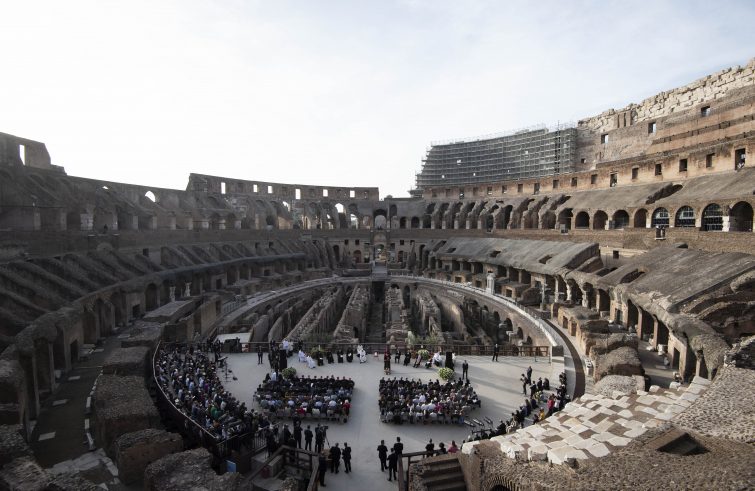
“With firm conviction we say: no more war! Let us stop all conflict. War carries only death and destruction; it is an adventure with no return in which we are all losers. Let the guns be silent, let a universal cease-fire be declared at once. Let negotiations capable of leading to just solutions for a stable and lasting peace be activated soon before it is too late. Let dialogue be resumed to nullify the threat of nuclear weapons”, state the opening lines of Rome’s Appeal for Peace read out by a young woman at the Colosseum after the Interreligious Meeting in the spirit of Assisi promoted by the Community of Sant’Egidio.
The text was signed on the stage by Pope Francis and by all religious leaders. With them on the stage was writer and Holocaust survivor Edith Bruck, who personally handed over the message of peace to young people that distributed it to the political authorities seated in the front rows, representing all world nations. “We are at a crossroads – write the religious leaders – we can either be the generation that lets the planet and humanity die, the one that accumulates and trades weapons, living under the illusion of being able to save ourselves against others, or we can be the generation that creates new ways of living together, that does not invest in weapons, that abolishes war as a means of conflict resolution and stops the excessive exploitation of planetary resources.” “The world, our common home, is only one and does not belong to us, but to future generations. Therefore, let us rid it of the nuclear nightmare. Let us immediately reopen a serious dialogue on nuclear non-proliferation and the dismantling of atomic weapons. Let us start again together from dialogue, which is an effective medicine for the reconciliation of peoples.
Let us invest in every path of dialogue. Peace is always possible! War never again! Never again one against the other!”.
For three days, religious leaders, political authorities, personalities from the world of culture and civil society discussed some of the major issues at stake in the world – from wars, to migration, to the role of religions. In the afternoon the members of different religions gathered in prayer separately in various parts of the city, each praying according to their own faith tradition. Mar Awa III, Catholicos-Patriarch of the Assyrian Church of the East, presided over the Christian prayer, with Pope Francis in the front row. He urged Christians “to become veritable agents of the peace of Jesus in our time”, “even if we are asked to donate our lives, in mutual love for one another.”
- (Foto Siciliani-Gennari/SIR)
- (Foto Siciliani-Gennari/SIR)
- (Foto Siciliani-Gennari/SIR)
After everyone had arrived at the Colosseum, the President of the Community of Sant’Egidio, Marco Impagliazzo, delivered the opening address of the concluding ceremony. “From the world swept by winds of war rise cries and invocations for peace. Millions of people are expressing, in different ways, one will: ‘No more war!’ From the bombed Ukraine, from the trenches of the Donbas, rise the cries of the wounded, the dying, and the lament of family and friends. The same cries of pain, the same pleas for peace, rise from Syria, the Caucasus, Afghanistan, Yemen, Libya, Ethiopia, the Sahel, northern Mozambique.” “So many cries, so many invocations! Who listens to these voices? Who listens to the voices of those who are no longer there?”, said Impagliazzo. “Noise and indifference are the way to silence the living and the dead. The voices of the dead -of whom we often do not even know the real number- are stifled, the lament of the wounded, the suffering, the hungry, the refugees are extinguished.
Partisans in the service of the reasons for war explain to us that there are ‘just wars’ and ‘holy wars.’ But we are here because we have chosen to listen to the cry of so many, brothers and sisters in humanity.
We, from all parts of the world, have not wanted to close our ears and bow to the reasons for war. Instead, we chose to listen to the cry for peace rising from all continents.”
“The paths to peace are there. It is a matter of glimpsing them, pointing them out, opening them, walking them.”
Pictures of wars and human suffering across the globe were then shown on a large screen, followed by a long minute of silence and an embrace of peace.





